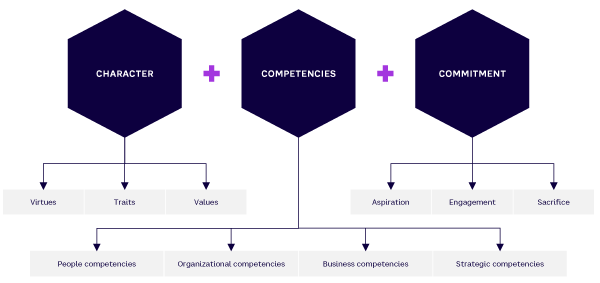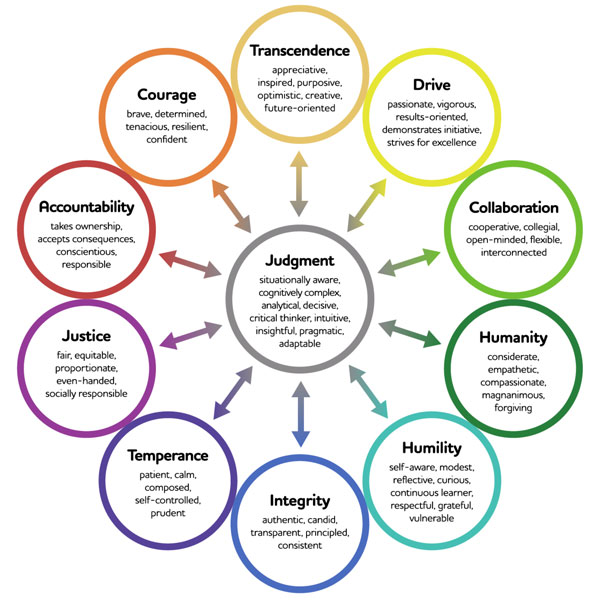Unfortunately, there continues to be an extensive, pervasive nescience of the power and impact of character on leadership. For decades, character received little attention in business schools or leadership development programs, resulting in a lack of emphasis placed on its foundational role in leadership, especially as it pertains to judgment and decision-making.
Research on why character has been neglected in leadership discourse, education, and development programs reveals some key factors. First, there is a myth that character is innate or set at an early age and cannot be developed. Second, there is a misconception that character is subjective and thus cannot be measured. Character is considered a “loaded word” that is deemed extraneous to business, and business culture has not created a common language or consistent lexicon with which to talk holistically about character in the workplace.
As such, it is important to first delineate how character, as it is used in this Advisor, is defined and positioned within a leadership context. Based on the extensive research conducted by the Ian O. Ihnatowycz Institute for Leadership at the Ivey Business School, Canada, character can be understood through two foundational frameworks: (1) the Effective Leader framework and (2) the Ivey Leader Character Framework (ILCF).
The Effective Leader framework posits that leadership is always a function of character, competencies, and commitment in commensurate measure (see Figure 1). Significant performance problems arise when any of these three pillars are deficient. However, although all three pillars must be equally present for effective leadership, character underpins competence and commitment.

Character determines whether one will obtain the competencies necessary to perform (through one’s sense of humility and accountability) and influences the effort one puts into the role of leader (through one’s drive and courage). Because of this, it is especially problematic that there is a systemic lack of focused learning and development on character. Competencies reflect what a person can do, character reflects what a person will do, and those can be vastly different things.
ILCF outlines the character dimensions (virtues) and elements (behaviors) that operate in concert to promote good judgment and effective leadership (see Figure 2). In this Advisor, “character” refers to these 11 dimensions operating in a networked capacity.

Although judgment is a dimension in its own right, ILCF reflects how it is influenced and formed through the interconnected relationship between all dimensions of character. As leadership is always contextual, character-infused judgment determines which dimensions are situationally appropriate to draw on, so one consistently makes good decisions at given moments, leading to elevated performance, enhanced well-being, and positive outcomes. In contrast, when some dimensions of one’s character are weak or underdeveloped, judgment is compromised, resulting in poor performance, diminished well-being, and negative outcomes.
[For more from the author on this topic, see: “Character Leadership at the Intersection of Business, Purpose & Sustainability.”]



